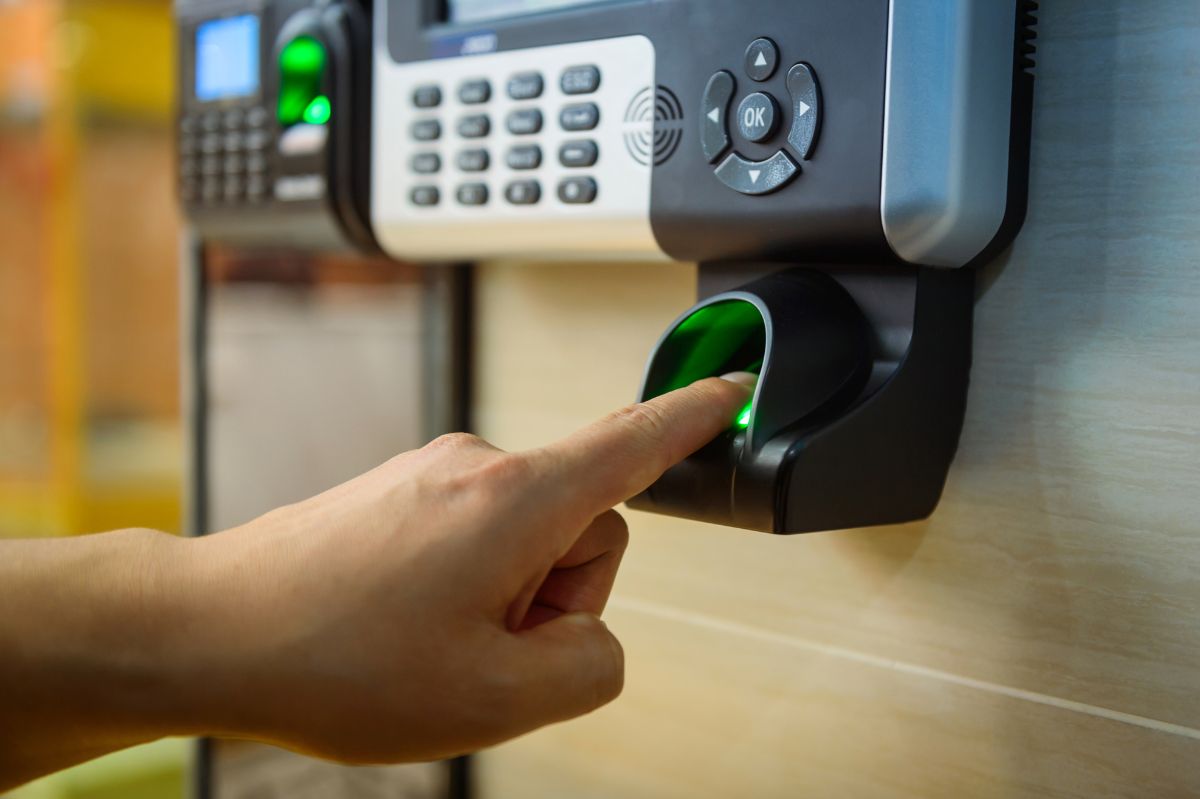Access Control, It may look like a scene from a movie. An employee is preparing to enter a high-risk area where precious objects are kept. As he presents his badge to the reader to enter, he feels the gun barrel pointed at his back. The thug on duty intends to take advantage of the favorable situation to break into the room and take down all or part of the content. Man under threat can only obey. His life hangs by a thread; his possessions are in danger. All that remains is to resign, or can the electronic system that controls access do something?
Among the various types of risk areas subjected to electronic access control, some may be intended to house tangible or intangible assets of particular value. Think, for example, of a vault in which precious objects are kept or an archive containing industrial secrets. A room of this type, if equipped with sufficient protection measures on a physical level (walls, windows, etc.) and electronic ( alarm system, access control, etc. ), offers a remarkable contrast to those who intend to access it stealthily. The criminal on duty, therefore, to achieve his goal, all that remains is to force the door to be opened, perhaps taking advantage of the auspicious moment in which the user is about to access.
Table of Contents
Access under the state of constraint
When his own safety is at stake, except in particular situations, the employee is required not to offer resistance and to comply with the will of the thief. Among other things, being objectively in a state of effective constraint, he would, in any case, not be liable for any crime. Unless, of course, it is a question of connivance or aiding and abetting. The matter is extensively dealt with in the Criminal Code. Does it mean you have to resign and passively witness the theft? Not really. In addition to the video surveillance service (in these cases, always present but also neutralizable), some features provided in the electronic system that controls access to the critical area can help better manage the situation without jeopardizing the victim’s life.
Two-factor identification
The gates of areas that present a high risk and are potentially subject to access under a state of constraint, in addition to an adequate physical structure, must first include an effective automatic identification system. In short, a simple badge is not enough to enter and exit. The most widespread and inexpensive recognition technique in these cases is based on two authentication factors: the classic card (preferably RFID) and the PIN (Personal Identification Number). After presenting or swiping his card into the reader, the person enters an individual four or five-digit numeric code on the keypad. By doing so, the security level rises considerably. While the badge can be stolen and used, the PIN is secret, that is, known only to the user. The safest solution, however, involves adopting biometric recognition (verification of fingerprints, three-dimensional geometry of the hand, etc.).
Event notification
How should an employee behave if he is subjected to acts of violence by a stranger who intends to obtain the door to be opened at any cost? Nothing more than usual. Assuming, of course, that he can keep his cool and keep some clarity. To communicate the event outside and ask for help, it is not necessary to adopt the classic measures envisaged in an emergency (with the consequent possible reaction of the criminal). Instead, it is sufficient to follow a simple but effective procedure found in most electronic access control systems: enter a special code instead of the PIN. The code can be of one or more types: the PIN’s value increased or decreased by one unit or a sequence of digits not found in any other PIN managed by the system. In the latter case, the Americans, for example, use the single 911 emergency number; in Italy, it is suggested not to use either 112 or 113 (the malevolent could become suspicious and react).
Discreet remote signaling
Once the person has been recognized by means of a special PIN, the access control system regularly opens the door; however, generating a “discreet” alarm event (access under duress) with an indication of the building in which is verified, the area, the gate, the name of the person involved, the date and time, etc. The event – highlighted on the monitor and detected by the security staff present on the spot or notified remotely (via e-mail, SMS, etc.) – allows the person in charge to take the measure he deems wisest and most appropriate. Generally, this type of notification is also accompanied by a lower level signal but is equally useful: the timed closure of a contact to be used to start the video recording system local or to activate a remote optical device and possibly also sound (as long as it is not audible from the place where the event is happening).
Also Read : When The Camera Intrudes: How To Defend Yourself From The Risks Of The IoT







